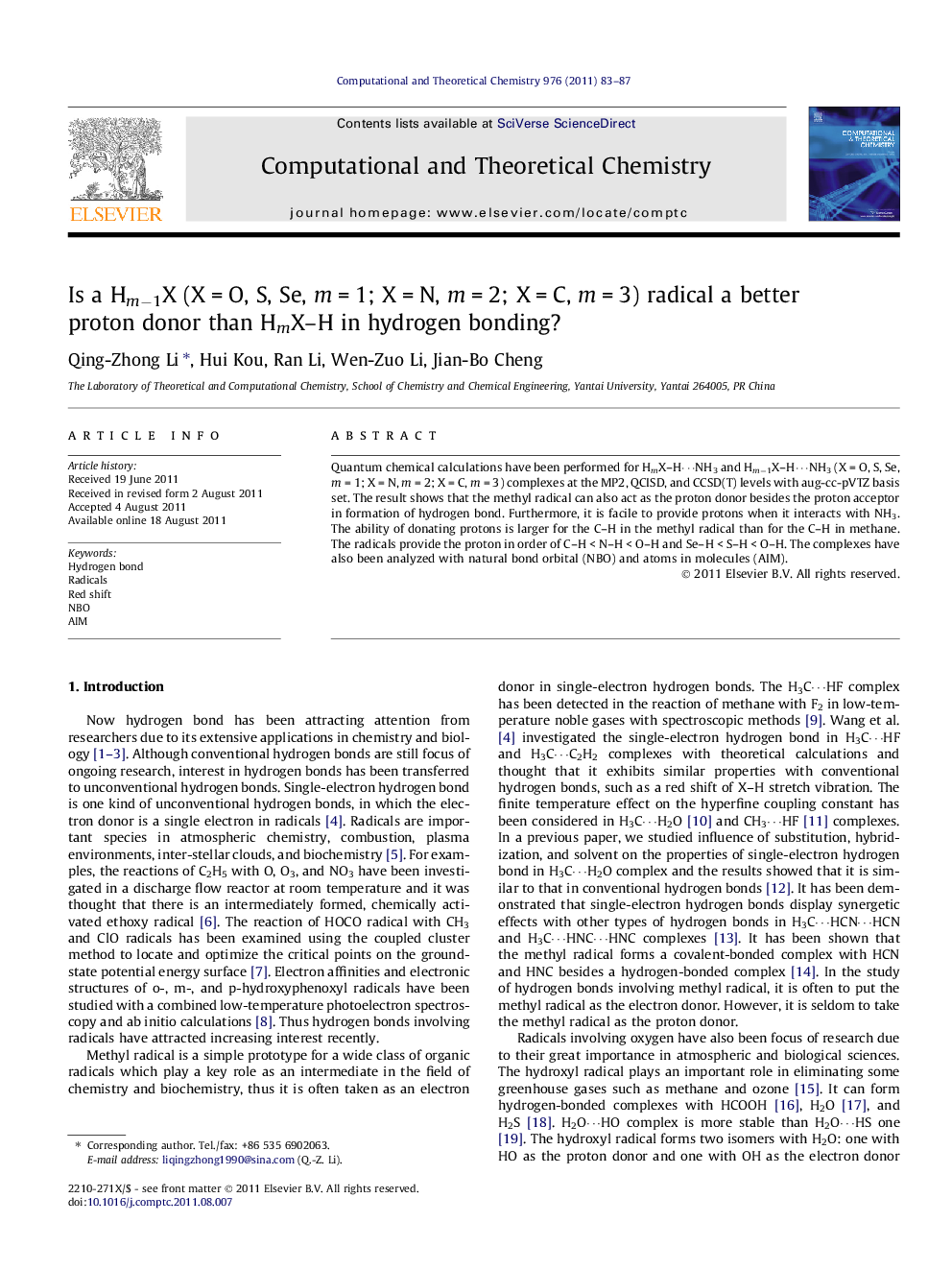| Article ID | Journal | Published Year | Pages | File Type |
|---|---|---|---|---|
| 5395030 | Computational and Theoretical Chemistry | 2011 | 5 Pages |
Quantum chemical calculations have been performed for HmX-Hâ¯NH3 and Hmâ1X-Hâ¯NH3 (X = O, S, Se, m = 1; X = N, m = 2; X = C, m = 3) complexes at the MP2, QCISD, and CCSD(T) levels with aug-cc-pVTZ basis set. The result shows that the methyl radical can also act as the proton donor besides the proton acceptor in formation of hydrogen bond. Furthermore, it is facile to provide protons when it interacts with NH3. The ability of donating protons is larger for the C-H in the methyl radical than for the C-H in methane. The radicals provide the proton in order of C-H < N-H < O-H and Se-H < S-H < O-H. The complexes have also been analyzed with natural bond orbital (NBO) and atoms in molecules (AIM).
Graphical abstractDownload full-size imageHighlights⺠The Hmâ1X-H radical is facile to provide protons relative to the HmX-H molecule (X = O, S, Se, N, C; m = 1-3). ⺠Methyl radical can act as the proton acceptor and donor in hydrogen bond. ⺠Methyl radical tends to provide the proton when it interacts with NH3.
